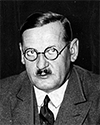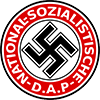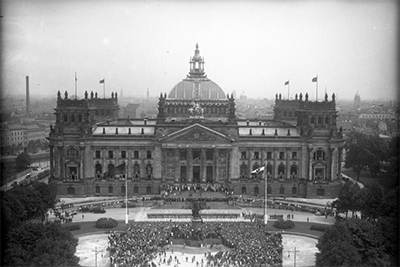The Rise of the Nazi Party
Part 1: Rough Beginnings The National Socialist German Workers' Party, much more well-known as the Nazi Party, rose to prominence from obscurity and governed Germany for 12 years, achieving a takeover of German lives and livelihoods and prosecuting a war that killed millions, including the extermination of many people solely based on their religion or way of life. 
The party began as the German Workers' Party, created in January 1919 by German nationalist Anton Drexler (right). Chief among the aims of the party was the delivery of more social welfare to German citizens who were part of the so-called Aryan race. Chief among the enemies of the party members were people of the Jewish faith. One of the early adherents to the party's philosophies was Adolf Hitler, who was still in the German Army at the time, having served in World War I. A powerful speaker, Hitler soon became the voice of the party. He took over as party leader at a special meeting in July 1921. 
In February 1920, party leaders had changed the name to the National Socialist German Workers' Party. This soon gave way to the Nazi Party. Nazi was an abbreviation of the party's name, which in German began Nationalsozialist. What they wanted was more political power; to get it, they needed more of a role in government. The German Empire lasted more than four decades, giving way to the much more representative Weimar Republic at the end of World War I. The Weimar Constitution outlined a government led by two parliamentary houses, the Reichstag and the Reichsrat. Members of both of these houses served four-year terms. Leading the Reichstag was the Chancellor, who was appointed by the President, the nominal head of government. 
In the daily doings of government, the President filled the role of a chief executive, making treaties and alliances and serving as commander-in-chief of the armed forces. The President also had the power to submit any Reichstag-enacted law to a public referendum and even to dissolve the Reichstag. In the spirit of checks and balances, the President did not have overall power, depending on the Reichstag to make the laws, and served a term of seven years; however, the President could assume the mantle of total authority if a state of emergency existed. Filling the Reichstag were members of various political parties. Most prominent of those political parties in the early days were the National Liberal Party and the Center Party. The latter survived into the republican era, which was dominated by the Social Democratic Party. Next page > Opportunism and Growth > Page 1, 2, 3 |
|
Social Studies for Kids
copyright 2002–2026
David White




